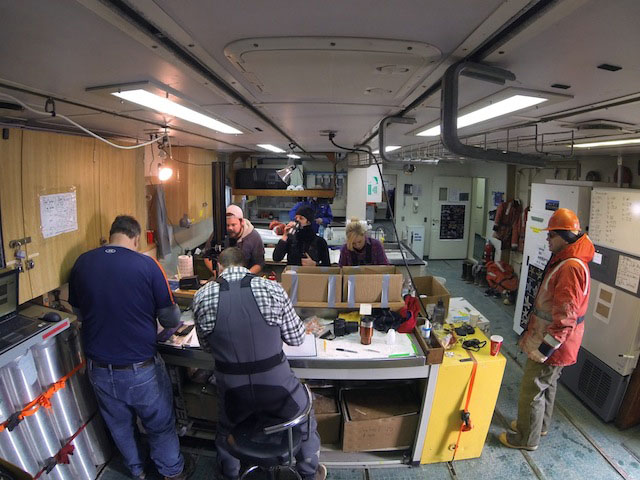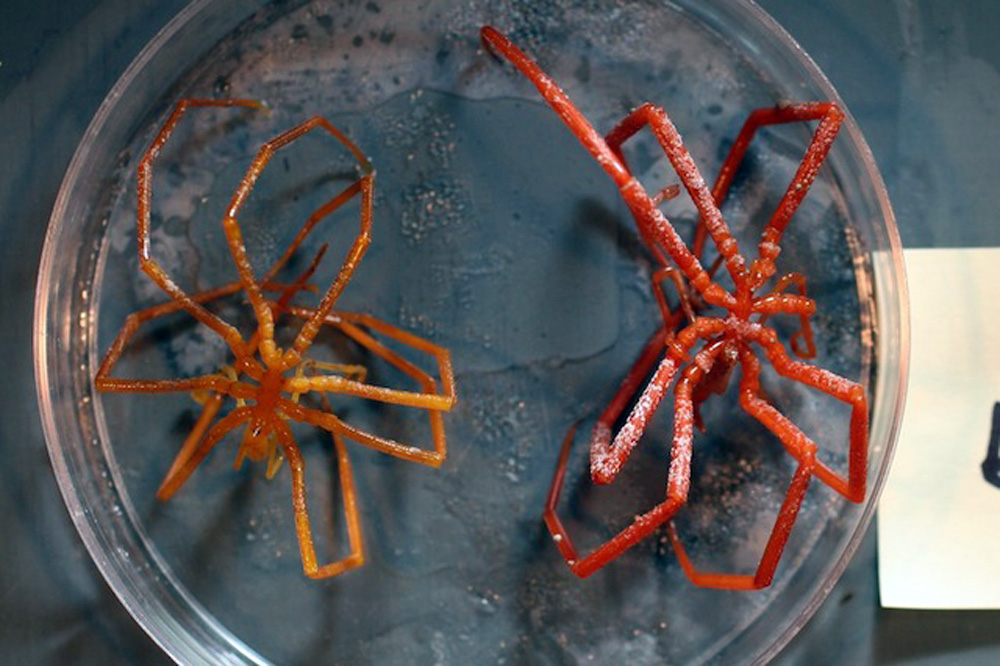Walk this waySea spiders studied for their response to climate change, evolution of gaitPosted September 11, 2014
One of the major benthic species found around the Antarctic is the sea spider. Scientists studying the circumpolar connectivity of marine critters living on the seafloor in the Antarctic collected large numbers of different pycnogonids. Many will be used for genetic and morphological research. But Andrew Mahon’s Pycnogonids are stenotherms, meaning they can only tolerate a very narrow range of temperature. In this case, sea spiders have a body temperature of between minus 1.7 degrees Celsius and plus 1.5C. 
Photo Credit: Auburn University
Researchers work in the lab on the research vessel LAURENCE M. GOULD.
The question before Mahon and his team is whether sea spiders have retained so-called heat shock proteins during the course of evolving in a very cold climate. Such proteins help the animals deal with the additional physical stress created by elevated temperatures. Some Antarctic marine species have lost this response –the only species known to lack these proteins – while other closely related Antarctic species have retained it, according to Mahon. This will be the first study testing cellular thermal response in pycnogonids, exposing the animals to short-term shifts in temperature for a few hours or days. The team is also interested in how sea spiders cope with living in such frigid waters. “We know [Antarctic] fish have antifreeze mechanisms that allow them to survive sub-zero temperatures; however, there is little if anything known about invertebrates and how they do this,” Mahon explain. “We wanted to take a look at how other species manage in the cold water.” A second experiment is taking a different approach to pycnogonid evolutionary traits. Scientists are studying the characteristics of the gait of multiple species and comparing them to those of other chelicerates, a subphylum in the taxonomic system that includes horseshoe crabs, scorpions, spiders and mites. During the second research cruise at the end of 2013 aboard the Laurence M. Gould Scientists will analyze the videos to determine basic gait properties, such as foot-fall patterns, and compare them among the collected sea spider species, as well as against related species outside the Antarctic. The comparisons will help scientists understand the extent to which gait properties among chelicerates have evolved. Return to main story — Split the difference: Researchers investigate genetic connectivity of species around the Antarctic. |



For USAP Participants |
For The Public |
For Researchers and EducatorsContact UsU.S. National Science FoundationOffice of Polar Programs Geosciences Directorate 2415 Eisenhower Avenue, Suite W7100 Alexandria, VA 22314 Sign up for the NSF Office of Polar Programs newsletter and events. Feedback Form |


